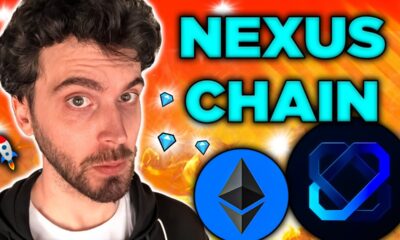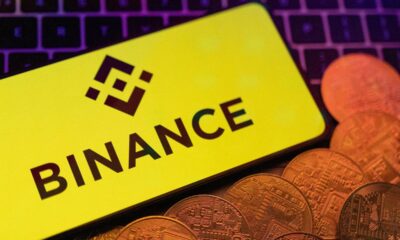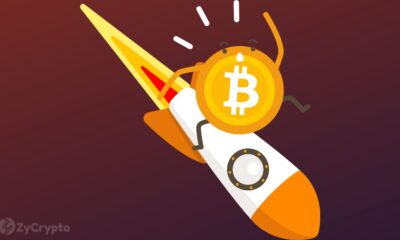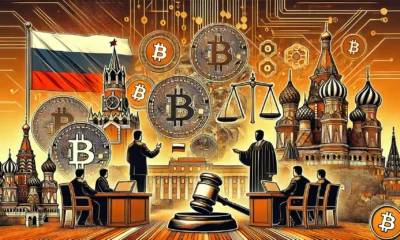News
$9M in Life Insurance Policies Tokenized by Infineo on Blockchain of Origin

Infineo, a blockchain-based life insurance company, has successfully migrated the “first” tokenized life insurance policy to a distributed ledger system.
Using the Provenance network, Infineo issued policies with a total value of $9.4 million. A partnership with Provenance Blockchain Labs, the group behind the development of the Provenance ecosystem, enabled this industry-first initiative. Infineo isn’t stopping there, though. They’re also laying the groundwork to build secondary markets for these tokenized policies, which will create new opportunities for peer-to-peer transactions and new products backed by tokenized life insurance.
Infineo’s success comes at a time when traditional capital markets and world of cryptocurrencies are increasingly convergent. We are seeing more and more institutions placing conventional financial products – think credit, bonds and private equity – on blockchain networks as tokens. According to a Bank of America report, this process, often called tokenization of real-world assets (RWA), has the potential to shake up legacy financial systems. The hope is that tokenization will lead to more efficient systems, faster settlements and greater transparency.
Reflecting on this innovation, Cole Snell, founder and CEO of Infineo, said: “By digitizing life insurance policies, we are not just making life insurance more accessible globally. We are also creating efficiencies and cost savings for everyone those involved in the industry, from start to finish.”
Infineo believes the $3 trillion life insurance market could benefit greatly from blockchain technology. One potential benefit is that it could help protect policyholders and beneficiaries from the loss of more than $7 billion in unclaimed benefits.
As for the Provenance network itself, it’s already making waves in the blockchain world. It currently hosts more than $7 billion in active real estate lines of credit, according to data from rwa.xyz. The network’s total value locked (TVL) stands at an impressive $13 billion, as reported on Provenance’s website.
Insight: The impact of tokenized life insurance
This development in the life insurance industry represents much more than just a technological innovation. Let’s explore some of the broader implications:
- Revolutionizing policy management: Tokenization could lead to more efficient policy management and claims processing, potentially reducing costs for both insurers and policyholders.
- Greater liquidity: Traditionally illiquid life insurance policies could become more easily tradable, opening up new financial possibilities for policyholders.
- Addressing Unclaimed Benefits: Improved traceability of tokenized policies could help address the $7 billion in unclaimed benefits in the industry.
- New Product Offerings: We may see innovative insurance products that blend insurance and investment features, meeting a more diverse range of consumer needs.
- Regulatory Challenges: Like any financial innovation, tokenized insurance policies will likely come under regulatory scrutiny to ensure consumer protection and financial stability.
- Broader Tokenization Trend: Infineo’s move is part of a broader trend of tokenization of real-world assets (RWA), which could reshape the way we think about ownership and investing across industries.
While it is still early, the tokenization of life insurance policies could be the first step towards a more accessible, efficient and innovative insurance industry. As this technology develops, it will be critical to balance the potential benefits with the necessary safeguards to ensure the best outcomes for all stakeholders.
As we continue to see the convergence of traditional finance and blockchain technology, developments like Infineo’s tokenized life insurance policies serve as a testament to the transformative potential of these innovations. The coming years will likely see further experimentation and adoption in this space, potentially reshaping not only the insurance industry, but the broader financial services landscape.
Want to learn more about blockchain from industry leaders? Check it out Blockchain Exhibition taking place in Amsterdam, California and London.
Explore more upcoming business technology events and webinars powered by TechForge Here.
News
Will the Federal Government Allow Wyoming to Work on Blockchain-Based Mergers?

The New Wyoming Law on decentralized and unincorporated non-profit organizations (DUNA) enables the formation of US-based nonprofits suited to the multi-billion dollar blockchain mergers currently taking place in Asia, such as Kaya with an Abu Dhabi foundation or the Alliance for Artificial Superintelligence in Singapore.
The law, effective July 1, is also written to give blockchains that use its framework a regulatory advantage under U.S. law. In theory, DUNA would make Wyoming the best place for blockchains with (or wanting) a U.S. footprint to legally locate their governance.
However, the current state of federal regulation of decentralized finance and digital assets means that…
News
Cardano Creator Offers Elon Musk to Secure X with Blockchain

Gamza Khanzadaev
Elon Musk Gets Surprising Offer From Cardano’s Charles Hoskinson
Read U.TODAY on
Google News
Ben Goertzel, a prominent AI developer and founder of the Cardano-based SingularityNet project, recently suffered a hacking incident on X, the social media platform formerly known as Twitter. In response, Cardano’s creator Charles Hoskinson solicited Elon Musk to implement decentralized identifiers (DIDs) on X to improve security.
Hoskinson proposed that integrating DIDs would solve numerous security problems on X. He suggested to Musk that DIDs could help verify and protect digital identities, reducing the risk of hacks and unauthorized access. Cardano The founder even offered to implement the solution for free, emphasizing the importance of improved identity solutions for the social network.
The proposal caught the attention of Timothy Ruff, a general partner at Digital Trust Ventures with experience in decentralized identity solutions. Ruff took issue with Hoskinson’s proposal, arguing that true decentralization requires a different approach than that offered by DIDs.
He stressed the need for a truly decentralized identity solution, rather than embedding one platform within another.
How is it possible?
Hoskinson clarified that his reference to DIDs was in line with the W3C standard, highlighting a blockchain-agnostic hyperledger project designed to issue and manage DIDs and other parts of the identity stack.
He argued that X, which aims to become a financial services company, needs a better identity solution for better security, access control and compliance. He reiterated his offer to integrate the framework into X’s infrastructure, which would then be managed by the development team.
Despite Ruff’s concerns about DID and its perceived limitations, Hoskinson continued to be committed to helping X evolve as a platform. He proposed creating an industry working group to bring together leading experts to address identity issues for X and position it as essential public infrastructure.
About the author
Gamza Khanzadaev
Financial analyst, trader and cryptocurrency enthusiast.
Gamza graduated with a degree in finance and credit with a focus on securities and financial derivatives. He then completed a master’s degree in banking and asset management.
He wants to contribute to the discussion of economic and fintech topics, as well as inform more people about cryptocurrencies and blockchain.
News
New Tool Enables Implementation of “No Code” Blockchain — TradingView News

BVM Studio was introduced as a new tool to simplify blockchain implementation with a no-code solution that aims to make blockchain technology more accessible.
The tool will provide a visual programming editor interface that will allow users to deploy their own blockchains using drag-and-drop blocks, similar to Lego bricks.
The approach promises to make it easy to build a zero-knowledge (ZK) rollup blockchain for any project, without any coding knowledge, computational setup, storage, or hardware nodes.
Speaking to Cointelegraph, the team at BVM, a blockchain-as-a-service infrastructure provider and creator of BVM Studio, explained that while the tool is “highly convenient,” it also has its drawbacks.
“[…] may not offer the same depth of customization as fully custom-coded solutions. However, we are constantly adding new modules and options to improve flexibility.”
Related: Web3 Game Center Makes It Easy to Release Minigames on Telegram
Self-service blockchain without code
Traditionally, implementing a blockchain requires technical knowledge, funding, and a solid basic understanding of coding and security measures.
Speaking to Cointelegraph, the BVM team clarified the functionality of the new self-service tool.
“[It] It requires no technical setup or coding skills, making it accessible to everyone. It offers a code-free drag-and-drop interface that allows anyone to deploy a blockchain in less than 2 minutes.”
The team explained that the tool allows for customization of “core layer, hardware, processing, data availability, block gas limit, withdrawal time, ZK prover” and pre-installed decentralized applications (DApps).
Safety and regulatory standards
As with all blockchain technologies, security is paramount, and it starts with the code behind the blockchain infrastructure.
The tool uses ZK-rollup technology to secure distributed blockchains “through three key components.”
“ZK-proofs stored on Bitcoin, ZK Provers to ensure correct execution, and ZK Light Nodes to verify the ZK-proofs. This is important because anyone can run a ZK Light Node on an old laptop.”
Speaking of regulatory considerations, the BVM team explained that “currently, building a blockchain does not conflict with any regulatory standards.”
“BVM Studio is just a tool that makes building a blockchain a lot easier.”
Users can deploy layer 2 and layer 3 blockchains using the tool on both Bitcoin and Ethereum.
News
Bitcoin Bridge Coming to Telegram-Linked TON Blockchain

The TON Foundation, which supports The open network (TON), announced on Wednesday that it will soon launch TON Teleport BTC, a trustless bridge designed to facilitate security Bitcoin transfers to and from the network connected to Telegram.
The new system aims to allow Bitcoin holders to participate in decentralized finance (DeFi) activities on TON while maintaining the security of their original assets, the Foundation said.
TON Teleport BTC will allow users to interact with decentralized exchanges, lending platforms, and other DeFi applications within the TON ecosystem. The Foundation said the process will be completely trustless and transparent, operating without a centralized issuer.
“All transactions are executed via smart contracts and verified by validators on the TON blockchain,” Anatoliy Makosov, TON’s chief technical officer, said in a statement. “Storing and using Bitcoin on TON is as secure as on the Bitcoin network itself, but significantly cheaper and more convenient.”
According to the foundation, every Bitcoin on TON will be fully backed by actual Bitcoins, pegged via the teleportation process to ensure safe and reliable transactions.
Open Network is closely aligned with the popular messaging app Telegram, as the messaging platform uses TON for ad revenue sharing payments with channel owners and other purposes. Telegram originally built TON internally before abandoning the project in 2020 amid regulatory scrutiny, with development continuing externally via a community of builders.
TON has seen growing attention and a surge in the price of its token this year amid that growing embrace from Telegram itself, along with a crypto gaming boom that has produced hits with Telegram-based games like Not money AND Hamster Fight.
Editor’s note: This article was written with the assistance of AI. Edited and verified by Andrea Hayward.
-

 News1 year ago
News1 year ago“Captain Tsubasa – RIVALS” launches on Oasys Blockchain
-

 Ethereum1 year ago
Ethereum1 year agoComment deux frères auraient dérobé 25 millions de dollars lors d’un braquage d’Ethereum de 12 secondes • The Register
-

 News1 year ago
News1 year agoSolana ranks the fastest blockchain in the world, surpassing Ethereum, Polygon ⋆ ZyCrypto
-

 Videos1 year ago
Videos1 year agoHistoric steps for US cryptocurrencies! With a shocking majority vote!🚨
-

 Videos1 year ago
Videos1 year agoIs Emorya the next gem💎 of this Bitcoin bull run?
-

 News1 year ago
News1 year agoSolana Surpasses Ethereum and Polygon as the Fastest Blockchain ⋆ ZyCrypto
-

 Videos1 year ago
Videos1 year agoNexus Chain – Ethereum L2 with the GREATEST Potential?
-

 Ethereum1 year ago
Ethereum1 year agoScaling Ethereum with L2s damaged its Tokenomics. Is it possible to repair it?
-

 News1 year ago
News1 year agoFnality, HQLAᵡ aims to launch blockchain intraday repositories this year – Ledger Insights
-

 Regulation1 year ago
Regulation1 year agoFinancial Intelligence Unit imposes ₹18.82 crore fine on cryptocurrency exchange Binance for violating anti-money laundering norms
-

 Bitcoin1 year ago
Bitcoin1 year agoBitcoin Drops to $60K, Threatening to Derail Prices of Ether, Solana, XRP, Dogecoin, and Shiba Inu ⋆ ZyCrypto
-

 Videos1 year ago
Videos1 year agoRaoul Pal’s Crypto Predictions AFTER Bitcoin Halving in 2024 (The NEXT Solana)



















